Mastering the Clock: Effective Time Management for Freelancers
In a world where the clock often feels like the enemy, freelancers navigate the delicate balance between passion and productivity. Whether you’re a seasoned writer crafting your next masterpiece, a designer piecing together a visual narrative, or a developer coding solutions in the digital realm, the art of time management is key to unlocking your true potential. Freelancing offers the freedom to choose when and where to work, yet this very flexibility can also lead to distractions and inefficiencies. How can freelancers harness the ticking hands of time to create not just a fulfilling career but also a balanced lifestyle? In this article, we’ll explore practical strategies and insights that empower freelancers to take control of their schedules, maximize their output, and ultimately, master the clock. Join us as we delve into the techniques that transform fleeting hours into productive masterpieces.
Freelance Writing
is not just about putting words on a page; it requires a keen understanding of how to allocate your time effectively. One of the most valuable tools in a freelancer’s arsenal is a well-structured schedule. By breaking down your day into manageable segments, you can establish clear blocks of time for research, writing, and revisions. Consider employing techniques such as the Pomodoro Technique, where you work for 25 minutes and then take a 5-minute break. This not only enhances concentration but also prevents burnout. Here are some essential tips for managing your writing time:
- Set Clear Goals: Define what you want to accomplish each day or week.
- Prioritize Tasks: Focus on high-impact projects first.
- Limit Distractions: Create a dedicated writing environment.
Additionally, using productivity tools can further streamline your workflow. Apps like Trello or Asana allow you to track projects, deadlines, and progress in real-time. For those who excel with a visual approach, try using a simple table to outline daily tasks and deadlines, as illustrated below:
| Day | Task | Deadline | Status |
|---|---|---|---|
| Monday | Research for Article | 3 PM | In Progress |
| Tuesday | First Draft Completion | 5 PM | Not Started |
| Wednesday | Editing and Revisions | 2 PM | Not Started |
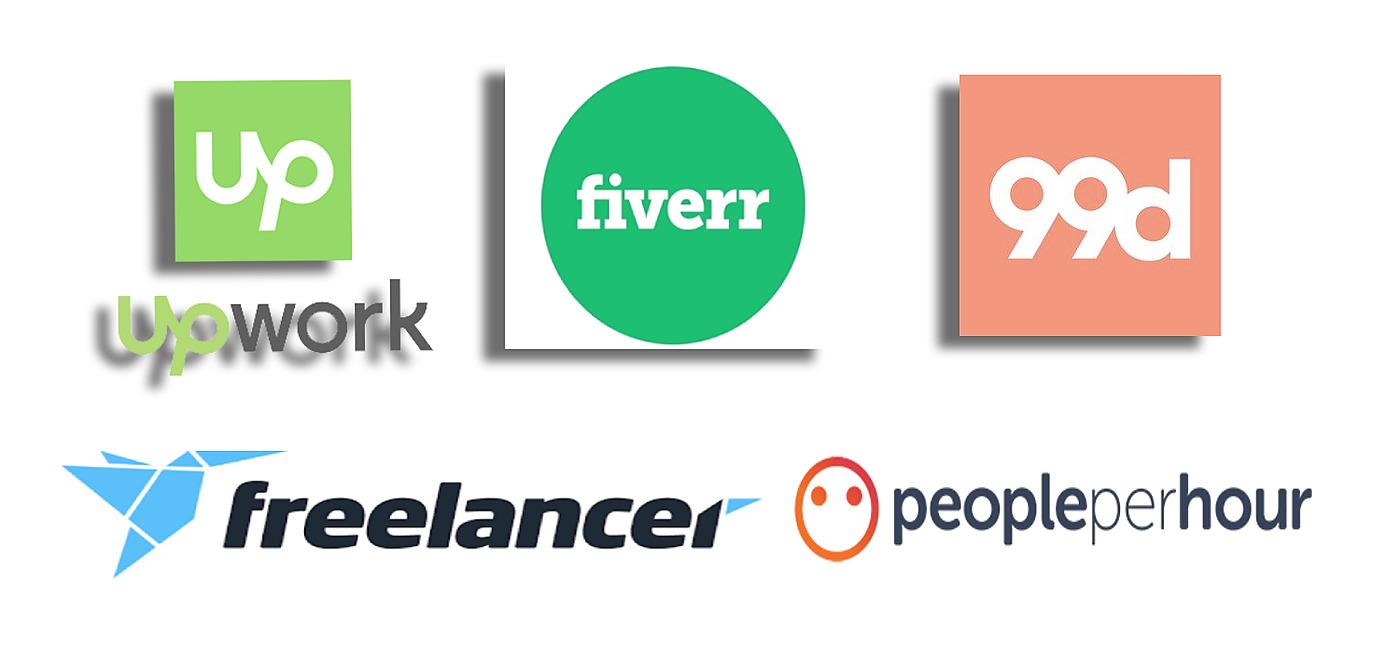
Freelancing Platforms
have revolutionized the way professionals connect with clients, allowing for flexible work arrangements and diverse project opportunities. Some of the most popular platforms include:
- Upwork – A hub for a variety of skills; excellent for both beginners and seasoned professionals.
- Fiverr – Known for its unique gig-based system, allowing freelancers to showcase specific services.
- Freelancer – Offers a competitive bidding system where freelancers can pitch for projects.
- Guru – Emphasizes long-term relationships, making it ideal for ongoing projects.
Each platform provides tools designed to assist freelancers in managing their time effectively. For instance, many include built-in time tracking systems that automatically log hours worked, which is ideal for billing clients accurately. A comparison of platform features might look like this:
| Platform | Time Tracking | Payment Protection |
|---|---|---|
| Upwork | Yes | Yes |
| Fiverr | No | Yes |
| Freelancer | Yes | Yes |
| Guru | Partial | Yes |
By choosing the right platform, freelancers can not only find work but also streamline their time management practices, ensuring they make the most of every hour logged.

Freelance Graphic Design
As a er, your time is a precious commodity. Balancing multiple projects while delivering high-quality designs requires a savvy approach to time management. One effective technique is the “Pomodoro Technique,” which encourages focused work sessions followed by short breaks. This method not only enhances productivity but also combats burnout, allowing your creativity to flourish. Additionally, consider breaking down your projects into smaller chunks with checklists to streamline your workflow. This way, you can tackle tasks with clarity and maintain momentum throughout the design process.
Furthermore, using digital tools can significantly enhance your time management skills. Explore applications such as Trello or Asana to keep track of your assignments and deadlines. Having a visual representation of your workload can reduce stress and ensure nothing falls through the cracks. Establishing boundaries is also key; set specific work hours and allocate time for rest and personal projects. This balance not only protects your mental health but also enriches your design work with fresh perspectives. Below is a simple table to help you visualize how to organize your schedule effectively:
| Time Block | Activity |
|---|---|
| 9:00 AM – 11:00 AM | Client project work |
| 11:00 AM – 11:15 AM | Break |
| 11:15 AM – 1:00 PM | Graphic design brainstorming |
| 1:00 PM – 2:00 PM | Lunch break |
| 2:00 PM – 4:00 PM | Client revisions and follow-ups |

Freelance Web Development
As a freelancer in the web development space, managing your time effectively can often feel like building a complex web application—requiring structure, precision, and a clear roadmap. Adopting time management techniques can help streamline your workflow and ensure that you meet deadlines while maintaining the quality of your work. Consider implementing the following strategies:
- Prioritize Tasks: Use the Eisenhower Matrix to distinguish between what is urgent and important.
- Set Deadlines: Even for client projects without specified timelines, establishing your own deadlines can boost accountability.
- Use Time Tracking Tools: Applications like Harvest or Toggl can help you understand how much time you spend on each project.
Breaking your work into manageable chunks can significantly enhance productivity. Consider using the Pomodoro Technique, where you work in short bursts followed by breaks. This approach not only maintains your focus but also reduces burnout. Additionally, creating a weekly planner can offer a visual layout of your tasks, allowing for better adjustments as needed. Below is a simple table showcasing a sample weekly planner for :
| Day | Task | Status |
|---|---|---|
| Monday | Client Meeting | Scheduled |
| Tuesday | Front-end Development | In Progress |
| Wednesday | Bug Fixing | Pending |
| Thursday | Back-end Integration | Planned |
| Friday | Client Feedback | To Be Reviewed |
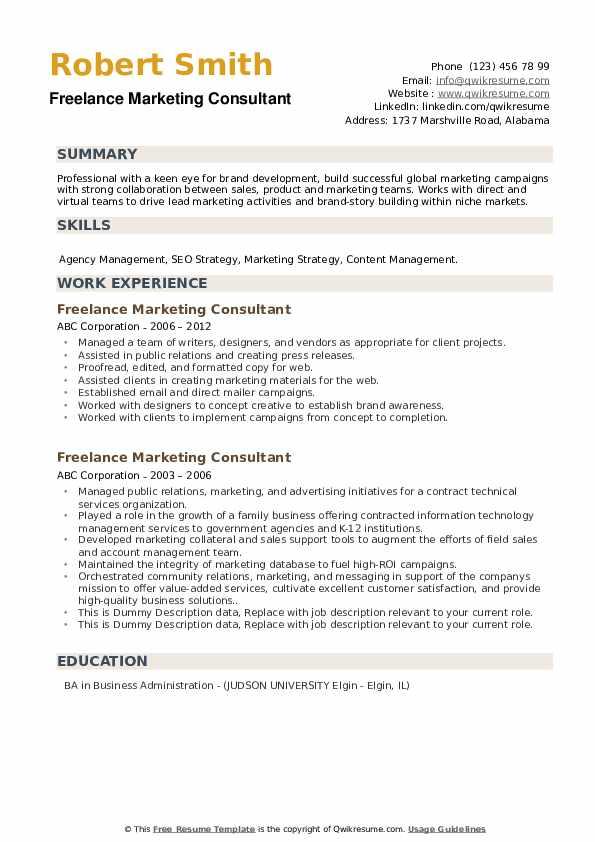
Freelance Marketing Consultant
As a , effectively managing your time is essential to deliver outstanding results for your clients while maintaining a work-life balance. To optimize your productivity, consider implementing a few key strategies:
- Prioritize Your Tasks: Identify high-impact activities that align with your client’s goals and prioritize them. This allows you to focus on what truly drives results.
- Set Clear Deadlines: Give each project a specific timeline. This helps create a sense of urgency and keeps you motivated.
- Use Time Tracking Tools: Utilize software like Toggl or Clockify to monitor how much time you spend on different projects and tasks.
- Establish a Routine: Design a daily schedule that includes dedicated time blocks for specific tasks, minimizing distractions.
Another effective approach is to leverage the power of the Pomodoro Technique, a time management method that uses timed intervals to enhance focus. Implementing this technique can significantly improve your workflow and productivity. Here’s a simple breakdown of how you might structure your work using the Pomodoro Technique:
| Time Interval | Activity |
|---|---|
| 25 Minutes | Focused Work on a Task |
| 5 Minutes | Short Break |
| 25 Minutes | Continue Working |
| 15 Minutes | Long Break After 4 Sessions |

Freelancing for Beginners
Starting on your freelancing journey can be both exhilarating and overwhelming, especially when it comes to managing your time effectively. To build a sustainable career, prioritizing tasks and setting a structured schedule can significantly enhance productivity. Implementing a few simple strategies can help you find the balance between work and personal time. Consider the following tactics:
- Set Clear Goals: Establishing daily, weekly, and monthly objectives can help you stay focused on what really matters.
- Use Time Blocking: Allocate specific blocks of time for particular tasks to minimize distractions and improve efficiency.
- Limit Distractions: Create a dedicated workspace and eliminate potential interruptions to maintain your concentration.
Moreover, leveraging tools designed for freelancers can take your time management skills to the next level, aiding in tracking progress and deadlines. For instance, utilizing time-tracking software can help you understand how much time you spend on different projects, allowing for better planning and productivity adjustments. Here’s a quick reference for popular tools:
| Tool | Purpose | Price Range |
|---|---|---|
| Toggl | Time Tracking | Free – $20/month |
| Asana | Task Management | Free – $24.99/user/month |
| RescueTime | Productivity Tracking | Free – $12/month |

Freelance Project Management
In the world of freelancing, project management is not just about overseeing tasks; it’s about mastering the intricate dance of time and priorities. Effective time management leads to higher productivity and better client satisfaction. To achieve success, freelancers can implement various strategies:
- Set clear deadlines: Establish realistic timelines for each project phase.
- Prioritize tasks: Use techniques such as the Eisenhower Matrix to distinguish between urgent and important tasks.
- Use time-blocking: Allocate specific time slots for different tasks to minimize distractions and maintain focus.
- Regularly review progress: Set aside time each week to assess what you’ve accomplished and recalibrate future plans.
Another essential aspect of successful is utilizing tools that streamline processes and enhance collaboration. Consider integrating digital platforms and apps that facilitate organization and communication among team members. Here’s a quick comparison of some useful tools:
| Tool | Features | Best For |
|---|---|---|
| Asana | Task assignment, timelines, calendars | Team collaboration |
| Trello | Visual boards, checklists, integrations | Kanban-style projects |
| ClickUp | All-in-one project management, docs, goals | Comprehensive project oversight |
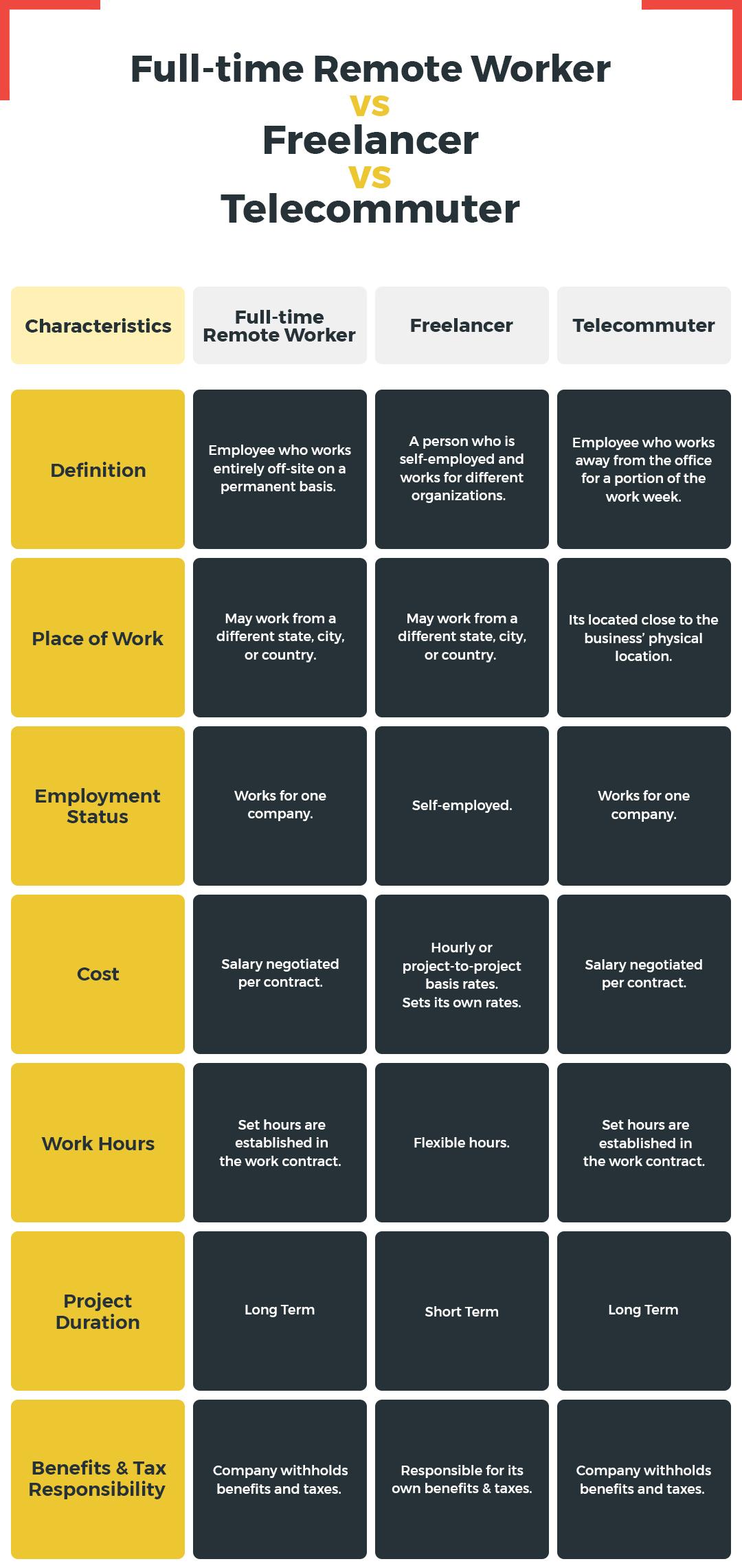
Remote Freelance Jobs
In the ever-expanding landscape of remote work, freelancers are basking in the freedom to choose their projects, set their schedules, and work from anywhere in the world. This flexibility, however, comes with its own set of challenges, particularly when it comes to managing time effectively. To truly thrive as a remote freelancer, it’s imperative to develop a robust time management strategy that aligns with both short-term tasks and long-term goals. Here are some effective methods to enhance productivity:
- Prioritization: Utilize tools like the Eisenhower Matrix to categorize tasks based on urgency and importance.
- Time Blocking: Allocate specific time slots for deep work, ensuring uninterrupted periods for concentrated efforts.
- Pomodoro Technique: Work in short bursts of 25 minutes followed by a 5-minute break to maintain focus and prevent burnout.
To aid in balancing various projects and deadlines, consider leveraging time-tracking apps that not only monitor hours worked but also highlight areas for improvement. Additionally, maintaining a simple yet effective organizational system can significantly streamline workflows. Below is a table showcasing some popular time-tracking tools for freelancers:
| Tool | Key Feature | Price |
|---|---|---|
| Toggle | Easy time tracking with reports | Free with premium options |
| Harvest | Invoicing and time tracking | $12/month |
| RescueTime | Detailed productivity analysis | $6/month |

Freelance Photography
In the realm of , mastering time management plays a crucial role in maximizing productivity and creativity. To thrive in the competitive landscape, photographers must juggle multiple tasks, from client consultation to editing. Implementing strategic time-blocking can be an effective way to allocate chunks of the day for specific activities. Consider the following tips to enhance your time efficiency:
- Prioritize tasks: Identify high-impact tasks that contribute significantly to your goals.
- Set specific deadlines: Create clear timelines for projects to avoid the pitfalls of procrastination.
- Utilize scheduling tools: Tools like Google Calendar can help you visualize your commitments and stay organized.
Additionally, establishing a consistent workflow can streamline the creative process and minimize distractions. When planning shoots, build in time for both preparation and post-production to ensure quality output. Here’s a simple table to help visualize a daily workflow for a freelance photographer:
| Time Slot | Task |
|---|---|
| 8:00 AM – 9:00 AM | Email clients and respond to inquiries |
| 9:00 AM – 12:00 PM | Conduct photo shoots |
| 12:00 PM – 1:00 PM | Lunch break |
| 1:00 PM – 3:00 PM | Edit and process photos |
| 3:00 PM – 4:00 PM | Social media updates and portfolio maintenance |

Freelance Video Editing
Time is the essence of . As a freelancer, managing your hours effectively can make the difference between delivering high-quality content on schedule and facing the dreaded deadline crunch. Here are some key strategies to consider for optimal time management:
- Prioritize Tasks: Begin with the most critical edits or projects. Break down larger assignments into manageable segments to enhance focus.
- Set Time Limits: Use techniques like the Pomodoro Technique, where you work in focused sprints followed by short breaks.
- Eliminate Distractions: Create a dedicated workspace, mute notifications, and establish boundaries with family or housemates during work hours.
Additionally, employing software that tracks your time can provide valuable insights into where you may be losing hours. Here’s a quick look at some popular tools:
| Tool | Features | Price Range |
|---|---|---|
| Toggle | Simple time tracking, reporting | Free, Pro version starts at $10/month |
| Harvest | Invoicing, expense tracking | Free for 1 person, $12/month thereafter |
| Asana | Project management, task assignments | Free for small teams, Premium at $10.99/user/month |

Freelance Social Media Manager
As a , navigating your tasks efficiently can significantly influence your productivity. Balancing various clients, their specific needs, and the ever-evolving landscape of social media requires a strategic approach to time management. Here are some key strategies to implement:
- Prioritize Your Tasks: Create a daily or weekly planner that highlights urgent and important tasks. This ensures you focus on what matters most.
- Batch Content Creation: Set aside dedicated time blocks for content creation, allowing you to maintain creativity without constant distractions.
- Use Scheduling Tools: Employ tools like Hootsuite or Buffer to schedule posts in advance, freeing up time for real-time engagement.
Establishing an efficient workflow not only enhances productivity but also reduces stress. Consider the following framework to optimize your time management:
| Time Management Strategy | Benefits |
|---|---|
| Time Blocking | Helps focus on one task at a time, minimizing distractions. |
| Daily Reviews | Enables tracking of progress and adjustment of strategies. |
| Client Communication Schedule | Establishes clear expectations and reduces ad-hoc interruptions. |

Freelance SEO Expert
As a , understanding how to manage your time efficiently can significantly impact your productivity and the quality of your work. To excel in this ever-evolving field, you need to balance client projects, continuous learning, and personal life. Prioritizing tasks effectively is essential. Consider implementing the 80/20 rule; focus on the 20% of your efforts that yield 80% of your results. This might mean dedicating more time to keyword research and optimization techniques while streamlining your reporting processes.
Additionally, utilizing tools can streamline your workflow and save precious hours each week. Here are some essential recommendations to consider:
- Time Tracking Software: Tools like Toggl and Clockify can help you monitor how much time you spend on various tasks.
- Project Management Tools: Platforms like Asana or Trello can assist in organizing tasks and tracking deadlines.
- SEO Tools: Google Analytics and SEMrush can provide valuable insights without digging deep into data sets manually.
| Task | Time Estimated |
|---|---|
| Keyword Research | 2 hours |
| On-page Optimization | 3 hours |
| Backlink Building | 1.5 hours |

Freelance Copywriting
Balancing the demands of various clients can be challenging for freelance copywriters, especially when deadlines loom. One effective strategy is the Pomodoro Technique, which encourages focused work in short bursts followed by brief breaks. This not only boosts productivity but also enhances creativity by preventing burnout. Here’s how you can implement it:
- Choose a task: Select a copywriting project that needs attention.
- Set a timer: Work for 25 minutes without distractions.
- Take a break: Rest for 5 minutes once the timer goes off.
- Repeat: After four rounds, take a longer break to recharge.
Additionally, employing a time-tracking tool can provide valuable insights into where your time goes each week. Understanding your work patterns allows you to make more informed decisions about when to take on new projects or focus on content revisions. Consider creating a weekly overview table to visualize your time allocation:
| Day | Hours on Copywriting | Client Projects | Breaks |
|---|---|---|---|
| Monday | 5 | 3 | 30 mins |
| Tuesday | 6 | 2 | 1 hour |
| Wednesday | 4 | 4 | 30 mins |
| Thursday | 5 | 3 | 1 hour |
| Friday | 6 | 2 | 30 mins |

Freelance Business Tips
Time is an invaluable resource for freelancers, and mastering it can significantly enhance your productivity. One effective way to manage your hours is by implementing the Pomodoro Technique—working in focused bursts followed by short breaks. This not only helps maintain concentration but also reduces burnout. Alongside this, utilize time-tracking tools to monitor how much time you spend on various tasks. This awareness can help you identify areas where you may be wasting time and adjust your workflow accordingly.
Additionally, consider structuring your day with a clear schedule. Start by outlining your top three priorities for each day, which can guide your efforts and prevent overwhelm. Set boundaries by designating specific work hours and creating a dedicated workspace to help eliminate distractions. Below is a simple table illustrating how you can break your day into manageable blocks:
| Time Block | Activity |
|---|---|
| 9:00 AM – 10:30 AM | Client Project Work |
| 10:30 AM – 10:45 AM | Break |
| 10:45 AM – 12:00 PM | Email Responses |
| 12:00 PM – 1:00 PM | Lunch & Relaxation |
| 1:00 PM – 3:00 PM | Creative Work/Brainstorming |
| 3:00 PM – 3:15 PM | Break |
| 3:15 PM – 5:00 PM | Finishing Up & Planning Tomorrow |

Freelance Rates and Pricing
Determining your freelance rates can feel like navigating a labyrinth, but understanding your value is crucial for successful time management. Setting a fair price not only compensates you for your expertise but also ensures you invest your time wisely. Consider these factors when establishing your fees:
- Experience Level: Your skills and background play a significant role in pricing.
- Industry Standards: Research what others in your field are charging to stay competitive.
- Project Complexity: More intricate tasks may warrant higher rates due to the time and effort they require.
- Client Budget: Tailoring your rates to fit different budgets can increase your client base.
Make it a practice to regularly evaluate and adjust your rates based on your growth and market demand. A well-structured pricing strategy can help you manage your time better and maximize your earnings. Below is a simple comparison table to illustrate various freelance pricing models:
| Pricing Model | Description | Benefits |
|---|---|---|
| Hourly Rate | Charge clients based on the time spent on their project. | Easy to track labor; ideal for unpredictable projects. |
| Project-Based Fee | A fixed price for the specific deliverable. | Clear expectations for clients; encourages efficiency. |
| Retainer Model | A pre-paid fee for a set amount of work over a specific period. | Provides steady income and commitment from clients. |

Building a Freelance Portfolio
A well-crafted freelance portfolio is your digital calling card, showcasing your skills and defining your brand in a competitive marketplace. To create an appealing portfolio, start by curating your best work; select pieces that not only reflect your abilities but also align with the type of projects you want to attract. Consider including a variety of work, such as:
- Case Studies: Provide insight into your thought process and problem-solving abilities.
- Client Testimonials: Positive feedback can significantly enhance your credibility.
- Relevant Projects: Choose examples that resonate with your target audience and future clients.
Beyond the aesthetic, ensure your portfolio are easily navigable and responsive on all devices. Utilizing a clean design, implement categories or tags to help potential clients find what they need swiftly. An additional feature can be a simple table that lays out your skills and services, giving visitors a quick overview of what you offer:
| Skill | Service | Experience Level |
|---|---|---|
| Content Writing | Web Content, Blogs, Articles | Advanced |
| Graphic Design | Branding, Logos, Marketing Collateral | Intermediate |
| SEO | Keyword Optimization, Audits | Intermediate |
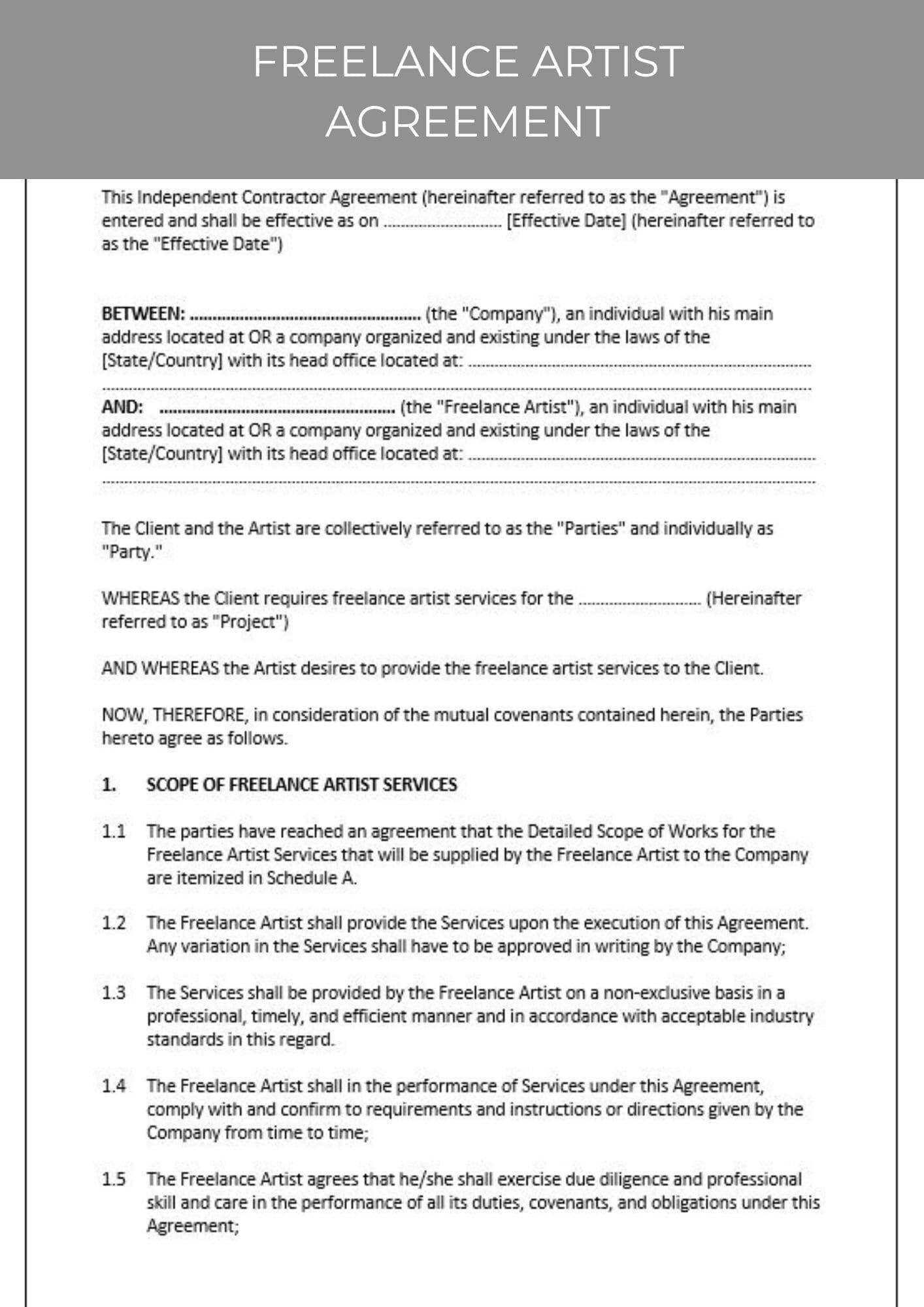
Freelance Contract Templates
As a freelancer, having a solid contract is essential to protect your time and the quality of your work. Utilizing can significantly streamline the onboarding process with clients, ensuring you establish clear guidelines from the start. These templates typically cover critical aspects such as payment terms, project scope, deadlines, and intellectual property rights. By customizing a basic template to suit each unique project, you can avoid misunderstandings and establish a professional framework that benefits both parties.
When selecting or creating your contract templates, consider including sections like:
- Payment Schedule: Outline when and how you’ll be paid.
- Scope of Work: Detail the tasks and deliverables expected.
- Revision Policy: Specify how many revisions are included in the project cost.
- Termination Clause: Include conditions under which either party can terminate the agreement.
| Template Type | Best For | Key Features |
|---|---|---|
| Basic Freelance Contract | New Clients | Standard terms, simple structure |
| Hourly Rate Contract | Ongoing Projects | Live tracking, flexible terms |
| Project-Based Contract | Specific Deliverables | Defined outcomes, detailed scope |

Freelance Time Management
Time management is the backbone of a successful freelance career. Without a structured approach to organizing your day, the freedom of being your own boss can easily turn into chaos. To harness your productivity, consider implementing techniques that have proven effective for many freelancers:
- The Pomodoro Technique: Work in focused bursts of 25 minutes followed by a 5-minute break to maintain energy levels.
- Time Blocking: Allocate specific blocks of time to different tasks or projects, reducing the likelihood of distractions.
- Set Clear Deadlines: Establishing deadlines, even for non-client projects, can instill a sense of urgency and help maintain momentum.
- Use Technology Wisely: Leverage apps and tools for scheduling, tracking projects, and managing tasks, such as Todoist or Trello.
Another key aspect of managing your freelance time is developing a routine that mirrors that of a traditional workplace while still allowing for flexibility. Identify your most productive hours and tailor your schedule around them. Consider maintaining a visual calendar to map out tasks and deadlines, making sure to account for personal commitments as well. To help visualize your process, here’s a simple table showcasing a daily time allocation:
| Time Slot | Task |
|---|---|
| 8:00 AM – 9:00 AM | Morning Planning & Emails |
| 9:00 AM – 12:00 PM | Focused Work Session |
| 12:00 PM – 1:00 PM | Lunch Break |
| 1:00 PM – 3:00 PM | Client Calls & Meetings |
| 3:00 PM – 5:00 PM | Wrap-up and Review |

Freelance Networking
Building a solid network is crucial for freelancers aiming to enhance their time management skills and boost their productivity. Connecting with fellow freelancers can lead to valuable insights and support that help streamline workflows and make the most of each hour. Consider actively participating in:
- Online communities and forums: Platforms like Reddit, Freelance Union, or specialized Facebook groups can provide immediate assistance and shared experiences.
- Local meetups and workshops: Join gatherings focused on freelance skills or creative industries; face-to-face connections often yield lasting relationships.
- Social media platforms: Utilize Twitter or LinkedIn to follow industry leaders, engage in discussions, and share your expertise to expand your reach.
Collaboration can also be a powerful tool for effective time management. Establishing partnerships with other freelancers can allow you to delegate tasks, share resources, and manage overlapping deadlines. Consider forming a structure using a simple table to define roles, responsibilities, and timelines:
| Freelancer Role | Responsibility | Deadline |
|---|---|---|
| Designer | Create visual content | Week 1 |
| Writer | Develop copy and SEO | Week 2 |
| Developer | Implement website features | Week 3 |
Utilizing a structured approach when networking and collaborating not only enhances productivity but also allows freelancers to learn from one another’s experiences, making the management of time and tasks significantly smoother.

Freelancing in Tech
Successfully navigating the world of freelance tech requires not just a robust skill set but also the ability to effectively manage time. The beauty of freelancing lies in its flexibility, but this can also lead to challenges if deadlines and deliverables are not tracked carefully. To make the most out of each project, consider implementing the Pomodoro Technique, which involves working in concentrated bursts followed by short breaks. This method not only boosts productivity but helps in maintaining focus, preventing burnout, and ensuring that your creativity flourishes without exhaustion.
Additionally, utilizing tools like Trello or Asana can be a game changer for project management. These platforms help in organizing tasks and visualizing workflows, making it easier for freelancers to prioritize their commitments. It’s also advisable to set specific working hours, as consistency can foster a professional mindset even when working from home. Below are tips for optimizing your time management:
- Establish a daily routine: Align work with your peak productivity hours.
- Limit distractions: Create a focused environment by silencing notifications.
- Track your time: Use apps like Harvest or Toggl to monitor how much time you spend on tasks.
- Reflect and adjust: Regularly review your completed projects to identify areas for improvement.
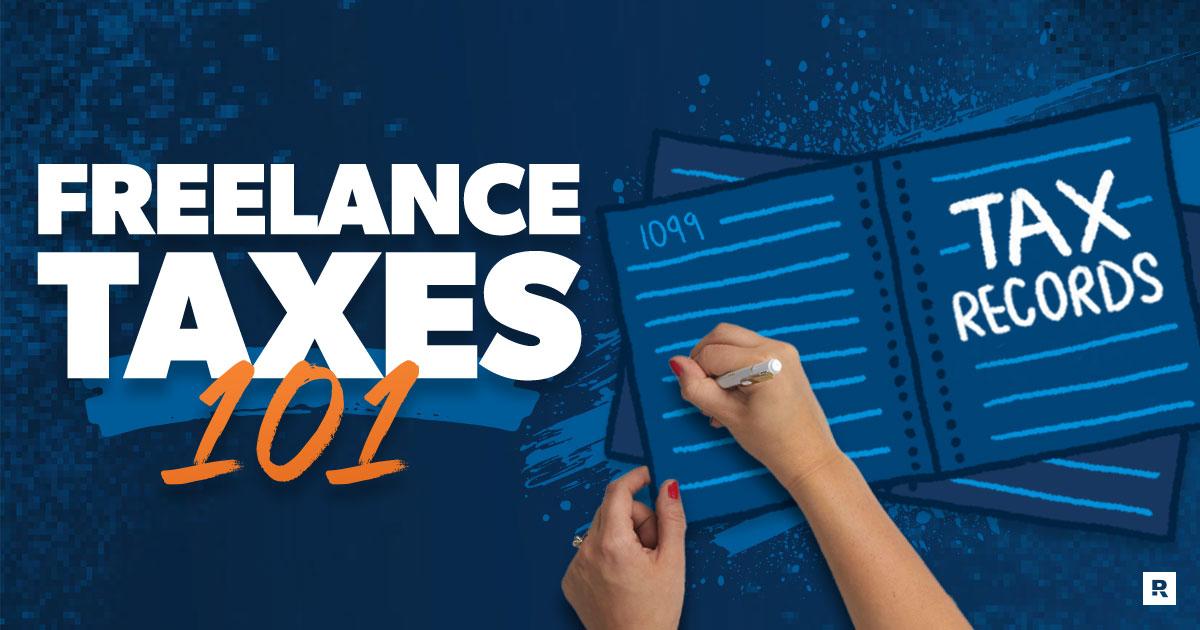
Freelance Taxes and Accounting
When you’re juggling multiple clients and projects, it’s easy to let tax obligations slip through the cracks. Keeping your finances organized is crucial for a freelancer. Consider establishing a robust accounting system that can help you track income, expenses, and deductions effectively. Utilize accounting software to automate your processes, allowing you to categorize expenses, generate invoices, and monitor payments. This not only helps streamline your workflow, but also ensures you’re fully prepared come tax season. Remember to regularly set aside a portion of your earnings for taxes; this will alleviate the pressure of large, unexpected payments later.
To make tax time less stressful, maintain a clear record of your income and expenses. Here are some essential tips for achieving that:
- First, separate personal and business expenses: This makes it easier to claim deductions and accurately report your income.
- Second, keep digital receipts: Use apps to scan and store receipts for easy access and organization.
- Third, consult a tax professional: A qualified accountant can help you navigate tax laws specific to freelancers and maximize your deductions.
| Expense Type | Tax Deductible? |
|---|---|
| Office Supplies | Yes |
| Software Subscriptions | Yes |
| Home Office | Yes |
| Travel Expenses | Yes, for business travel |

Freelance Client Retention
Building strong relationships with clients is pivotal for freelancers aiming for sustainable success. By ensuring open communication, you foster trust that can lead to long-term collaboration. Tips for effective communication include:
- Regular check-ins to discuss progress and gather feedback.
- Setting clear expectations from the start regarding deadlines and deliverables.
- Personalizing interactions by acknowledging major milestones and achievements of your clients.
This proactive approach not only keeps clients engaged but also positions you as a reliable partner, making it easier to secure repeat projects.
Furthermore, showcasing your ability to manage time effectively can simplify the client retention process. Clients value professionals who respect their time and adhere to deadlines. Create a detailed project timeline with milestones that are easy for clients to track. Consider displaying your time management success through:
| Project Phase | Expected Completion | Status |
|---|---|---|
| Initial Consultation | Day 1 | Completed |
| Draft Submission | Day 7 | In Progress |
| Final Revisions | Day 10 | Pending |
Using tools and techniques to track your productivity not only provides transparency but also reassures clients that you are committed to delivering your best work efficiently.

Freelancing Full-Time vs Part-Time
Choosing between full-time and part-time freelancing is a significant decision that impacts not just your workload but also your lifestyle, financial stability, and overall work-life balance. Full-time freelancing offers the opportunity to immerse yourself completely in your craft, allowing for deeper client relationships and possible financial rewards. You can dedicate undivided attention to your projects, which can lead to faster growth in your skills and portfolio. However, it may come with challenges such as inconsistent income and the pressure to fill each hour with billable work.
On the flip side, part-time freelancing can be an excellent way to test the waters while maintaining the security of a regular job. It allows for a more flexible schedule where you can prioritize other aspects of life, such as family, health, or personal projects. Freelancers who choose this route can gradually build their client base and experience, and often enjoy a less stressful approach to their work. However, the primary drawbacks can include limited availability for clients and potentially slower income growth, which may delay the transition to full-time freelancing.
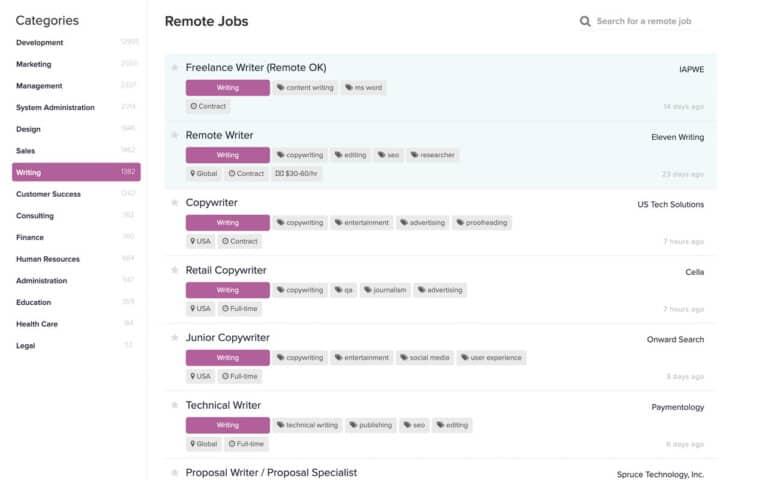
Freelance Job Boards
For freelancers seeking consistent work opportunities, serve as invaluable platforms. These sites aggregate a variety of job listings across different niches, making it easier for you to find gigs that match your skills and schedule. Here are some key benefits of utilizing :
- Diverse Opportunities: From web development to graphic design, there’s a range of projects available.
- Streamlined Applications: Most platforms allow you to submit proposals quickly, saving precious time.
- Client Ratings: Many boards feature client reviews, helping you choose reputable projects.
- Networking Potential: Connect with other freelancers, which may lead to collaborations or referrals.
While many job boards are free to access, others offer premium features for a subscription fee, providing access to exclusive listings or enhanced visibility for your profile. This investment can pay off by allowing you to secure higher-paying and more fulfilling assignments. Below is a table highlighting some popular and their key features:
| Job Board | Focus Area | Key Features |
|---|---|---|
| Upwork | General | Wide range of categories and client vetting process |
| Fiverr | Creative Services | Service-based marketplace with fixed prices |
| Freelancer | General | Bidding system and project contests |
| Toptal | Tech/Finance | Rigorous screening for top talent |

Freelance Branding Strategies
Building a strong freelance brand is essential for standing out in a crowded market. Your brand tells potential clients who you are and what you can deliver, so it’s crucial to invest time in defining it. Start by outlining your unique selling proposition (USP), which differentiates you from others in your field. Focus on showcasing your skills, experience, and values. Ensure consistency in your branding across all platforms, including your website, social media, and portfolios. This consistency fosters recognition and trust, making it easier for clients to choose you over competitors.
Implementing effective branding strategies can involve a variety of tactics. Here are some key approaches to consider:
- Personal Website: Create a professional site to serve as your online business card.
- Social Media Presence: Use platforms like LinkedIn, Instagram, or Twitter to connect with potential clients and showcase your work.
- Networking: Attend industry events or join online communities to foster relationships and enhance your visibility.
- Content Marketing: Share valuable insights through blogging or creating tutorials to demonstrate your expertise.
As fascinating as these strategies are, measuring their effectiveness is equally important. Consider using a simple tracking table to evaluate your branding activities:
| Activity | Frequency | Client Engagement |
|---|---|---|
| Website Updates | Monthly | 5 New Contacts |
| Social Media Posts | Weekly | 10 Likes |
| Networking Events | Quarterly | 3 New Projects |

Freelancing in Graphic Design
offers unparalleled freedom, but it comes with the challenge of managing your time effectively. To stay ahead in this competitive field, it’s crucial to develop strategies that promote productivity while respecting your creative flow. Consider adopting the Pomodoro Technique, which entails working in focused intervals—typically 25 minutes—followed by short breaks. This method not only bolsters concentration but also helps prevent burnout, ensuring you remain enthusiastic about your projects. Additionally, employing tools like Trello or Asana can help you track tasks visually, providing a clearer path to completing your assignments without feeling overwhelmed.
Success in your freelance journey often hinges on establishing a balanced routine. Setting designated work hours, even if your schedule is flexible, can foster discipline. Incorporate the following tips into your daily life:
- Prioritize Tasks: Identify urgent projects and allocate your peak energy times to tackle them.
- Set Realistic Deadlines: Avoid overcommitting to ensure you maintain high-quality work.
- Limit Distractions: Designate a workspace that minimizes interruptions and promotes creativity.
Remember, the key to thriving as a freelance graphic designer lies not just in talent, but in mastering your time.

Freelance Personal Development
Time management is one of the most critical skills for freelancers navigating the complexities of self-employment. Unlike traditional employees, freelancers often juggle multiple clients, deadlines, and projects—all while trying to maintain a healthy work-life balance. Here are some strategies to help you harness the potential of your hours:
- Prioritize tasks: Use tools like the Eisenhower Matrix to distinguish between what’s urgent and important.
- Set specific goals: Break down your projects into smaller, manageable tasks that you can achieve daily or weekly.
- Limit distractions: Identify what interrupts your flow and create an environment conducive to focus.
Additionally, leveraging time management tools can enhance your productivity significantly. For example, time-tracking software can illuminate how you’re spending your hours, allowing you to adjust your habits accordingly. Consider using a simple table to visualize your tasks and allocate time more effectively:
| Task | Estimated Time | Status |
|---|---|---|
| Client Email Responses | 1 hour | Pending |
| Project Research | 2 hours | In Progress |
| Content Creation | 3 hours | Completed |

Freelance Income Diversification
In today’s gig economy, relying solely on a single source of income can be risky. Freelancers can safeguard their financial stability by exploring multiple income streams. This can include supplementing core freelance work with side projects or passive income ventures. Some effective strategies for diversification are:
- Teaching or Tutoring: Share your expertise through online courses or one-on-one sessions.
- Affiliate Marketing: Promote relevant products or services that align with your niche.
- Stock Photography or Artwork: Sell your creative works on platforms like Etsy or Shutterstock.
- Content Creation: Start a blog or YouTube channel to monetize your ideas and experiences.
Diversifying your income not only enhances financial security but also opens doors to new opportunities. By implementing a mix of approaches, you can create a broader safety net while keeping your work engaging and exciting. Consider the following table to visualize potential income sources:
| Income Source | Description | Potential Earnings |
|---|---|---|
| Freelance Projects | Core work in your specialized field. | Varies with contract and hours. |
| Online Courses | Sharing knowledge via educational platforms. | Up to $1,000/month. |
| Blog Revenue | Monetization through ads and sponsorships. | $100 to $5,000/month depending on traffic. |
| Stock Sales | Income from selling stock images and art. | $50 to $500/month. |

Freelance Career Growth
For freelancers, mastering time management is crucial not only for meeting client deadlines but also for fostering long-term career growth. Prioritization and goal-setting can significantly enhance your productivity levels. Start by breaking down larger projects into manageable tasks, enabling you to focus on one step at a time. Consider using tools like to-do lists, or project management apps, and set specific milestones to track your accomplishments. This method not only helps in staying organized but also provides a sense of accomplishment as you check off completed tasks.
Moreover, creating a structured daily routine can lead to more effective time use, allowing you to channel your energy into your most productive hours. Incorporating techniques such as the Pomodoro Technique or time blocking can help maintain focus and reduce distractions. A sample weekly schedule might look like this:
| Day | Task | Time Allocation |
|---|---|---|
| Monday | Client Work | 9 AM – 12 PM |
| Tuesday | Marketing & Networking | 10 AM – 1 PM |
| Wednesday | Skill Development | 1 PM – 3 PM |
| Thursday | Client Follow-ups | 10 AM – 11 AM |
| Friday | Review & Planning | 2 PM – 4 PM |
By implementing these strategies, freelancers can not only enhance their time management skills but also lay a solid foundation for sustainable career advancement.

Freelance Market Trends 2024
The freelance landscape is evolving, with 2024 expected to bring significant changes in market trends. One of the most notable shifts is the rise of niche specialization. Clients are increasingly looking for freelancers who possess unique, targeted skills that can directly meet their project needs. As a result, freelancers are encouraged to hone their expertise in specific areas and showcase their capabilities through tailored portfolios. The demand for specialized services not only enhances job security but also allows freelancers to command higher rates, making effective time management in skill development even more crucial.
Another emerging trend is the growing reliance on technology and automation tools to streamline workflows. Freelancers are embracing digital solutions that optimize communication, project tracking, and invoicing, allowing them to focus on delivering quality work. By integrating tools like task management software, time trackers, and automated billing systems, freelancers can maximize their productivity. Here’s a quick overview of popular tools that can aid in time management:
| Tool Name | Purpose | Benefits |
|---|---|---|
| Trello | Project Management | Visual organization and collaboration |
| Toggle | Time Tracking | Insight into time spent on tasks |
| FreshBooks | Invoicing | Easy billing and expense tracking |
The Conclusion
As we wrap up our journey through the intricate world of time management tailored for freelancers, it becomes clear that mastering the clock is not just about managing hours; it’s about harnessing potential. By adopting structured techniques, prioritizing tasks, and creating a balanced schedule, you can transform your freelance career from chaos to clarity.
Remember, each tick of the clock presents an opportunity—not just to work harder, but to work smarter. Embrace the tools and strategies discussed, find what resonates with your unique workflow, and be open to adapting as your freelance journey evolves.
time is your most valuable resource and the key to achieving your personal and professional goals. Whether you’re crafting captivating content, designing stunning visuals, or offering transformative services, the way you navigate your time can propel you to success. So take a deep breath, reclaim those minutes, and step boldly into the life you envision—one hour at a time.





